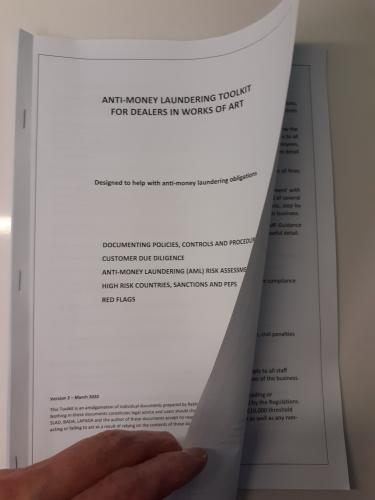

AML Reminders - Summer 2020
Any member who sells items for more than £8,500 should bear in mind the following points:
-
The Regulations apply to dealers handling “works of art” worth the equivalent of €10,000 or more in any currency, including sterling.
-
Read the definition of “works of art” in BADA’s Anti-Money Laundering Qs & As
-
Our Anti-Money Laundering Toolkit for Dealers in Works of Art has been revised with a new section that gives guidance on documenting written policies, controls and procedures for how in practice you will apply your checks on customers. It is very important that you prepare this document, because HMRC will ask to see it if you receive a compliance visit.
-
Remember to prepare and keep your written risk assessment for your business. HMRC will also ask to see this.
-
If the regulations apply to you remember to register with HMRC no later than 9 January 2021.
-
Set up a methodical way of retaining all the information you need to keep about the customers to whom you have sold works of art worth €10,000 or more. You may wish to do this by customer name or simply attach it to the file containing the sales invoice. If you receive a visit from HMRC they may pick high value transactions at random and ask you to show you the records relating to them. If you cannot readily find them HMRC will not be impressed!
-
If you sell a mixture of works of art and items that are not works of art (such as manufactured porcelain figures) and you choose only to carry out due diligence on people to whom you sell “works of art” then be prepared to explain to HMRC the characteristics of a particular object that mean it doesn’t fall within the categories defined as “works of art” in the legislation. For example, the item may be a functional object, albeit an attractive one created by skilled carving, and not a work of art produced for its beauty alone. If you have problems with HMRC in this area you may wish to contact BADA for help.
-
Consider setting up a short internal check list for each customer or transaction. The checklist could be part of the file containing the evidence you have obtained. The checklist could record the information you were required to obtain, such as full name, date of birth, nationality and permanent residential address and for each piece of information an indication of how and using which documents you verified it and how the documents were received (electronically or originals). Also on the checklist you could provide a brief risk analysis on the customer (e.g. “Mr W is a 60 year old British GP and collector of watercolours, to whom we have been selling since the Olympia fairs in the late 1980s. We therefore consider him a very low AML risk.”)
-
Don’t forget to refer to the HM Treasury approved Guidance on Anti-Money Laundering for UK Art Market Participants

